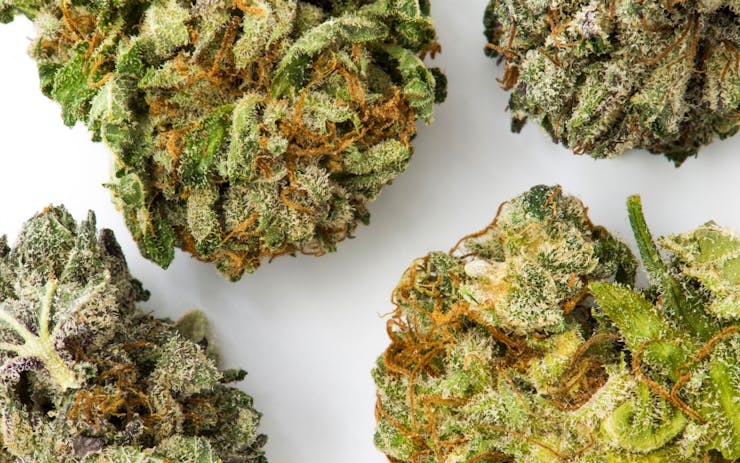A Spanish term meaning “seedless,” sinsemilla refers to cannabis grown without seeds. In the wild, cannabis grows seeds along with buds so when it dies, it will grow again the following year. Growing sinsemilla cannabis was adopted in the 1960s and ‘70s to produce buds without seeds for consumers, by only growing bud-producing female cannabis plants and not allowing them to get pollinated.
“I only buy sinsemilla flower.”
“Sinsemilla is the only way to grow premium cannabis.”
History of sinsemilla
Cannabis can be male or female, and in the wild males pollinate females, which then produce seeds. The genetics of both male and female plants are passed down to the seeds, so that when a female plant dies—cannabis is an annual, growing and dying each year—it drops seeds, which grow into new plants the following spring.
Only female cannabis plants produce buds, so when they are pollinated, seeds grow with the buds. Sinsemilla, or “seedless” cannabis was grown to keep seeds out of female plants so they only produce buds. To grow sinsemilla cannabis, male plants are discard or moved away from females before they develop pollen sacs and can pollinate females. This allows female plants to focus their resources on bud production instead of seed production.
Growing cannabis with seeds is beneficial for the natural evolution of the plant. Plants naturally evolved within their environment, picking up traits and characteristics that helped them better survive their environment.
Benefits of sinsemilla
Before sinsemilla became a standard practice among cultivators, there was a good chance weed you grew or bought had seeds in the buds. Bud with seeds are generally considered lower quality—seeds lead to a harsh smoke.
With sinsemilla, the cannabis plant can divert all its energies and resources on producing buds, instead of seeds. This leads to better quality and higher potency buds, and also higher yields because there won’t be seeds in the buds. The difference in potency is so drastic that when consumers first started smoking sinsemilla, they thought it was a different species of cannabis.
